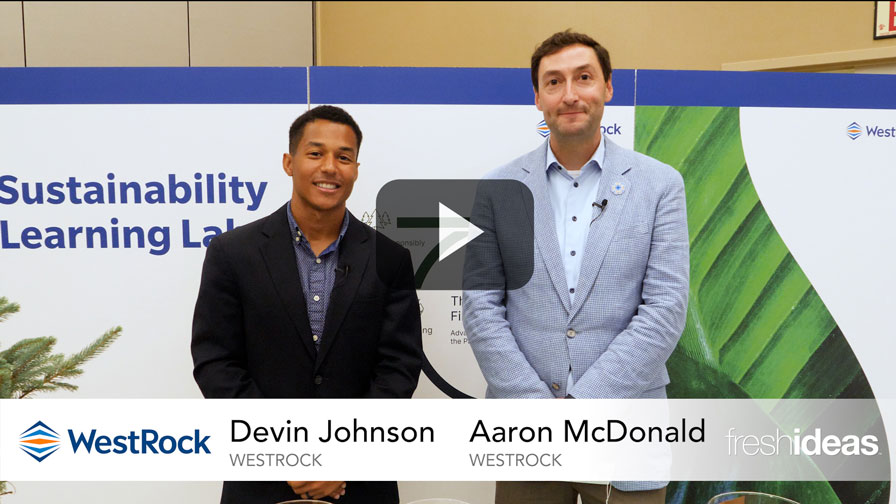Copperstate Farms: What’s Important in Greenhouse Cannabis

From left: Copperstate Farms managing director Fife Symington and CEO Pankaj Talwar are thriving inside North America’s largest cannabis greenhouse operation. This photo was taken inside Copperstate’s recent 10 acre high tech greenhouse expansion project, set to come online this year in Snowflake, AZ. (Photo Courtesy – Copperstate Farms)
Just as the protagonist in Bob Seger’s definitive anthem, “Against the Wind,” famously muses, figuring out “what to leave in, what to leave out” can be one of the toughest aspects of a reporter’s day-to-day.
June’s upcoming Greenhouse Grower cover story, profiling North America’s largest legal cannabis greenhouse operation – Copperstate Farms – was no exception. CEO Pankaj Talwar, as well as Co-founder Fife Symington, both proved excellent interview subjects for the piece, taking us inside their world of growing cannabis at a scale few at this point have even attempted.
Most of the good stuff ended up making it into the article, which should hit GreenhouseGrower.com and our print issue sometime in early June, but there’s always interesting tidbits that come out of the process that end up on the cutting room floor.
Here’s a few snippets from the interview process with the executive team that didn’t make the final version of the story.
J Fife Symington on growers having to choose between growing for flower and growing for extraction:
“We can grow an incredible amount of biomass and then be very selective in picking out buds,” he explained. “We’ll look at a particular crop or a strain when it is ready to harvest, and we’ll make the decision to take the top colas and those will be completely hand trimmed, never touched by machine. Those flowers will go into our dispensary flower packs, and often the rest of that same plant will go through a mechanical trimmer and we can use that biomass in our extraction process.”
Pankaj Talwar on misconceptions of growing cannabis among traditional horticulturists:
“I would say a common mistake that some traditional parts of ag have made when they decide to move into cannabis is, a great deal of them tend to overly simplify how complex it is to grow cannabis,” he said. “If you think about what’s required to grow tomatoes and cucumbers, it’s typically one strain or a maybe a handful of varieties at most. We’re running 50 different strains through our greenhouse at any given time, and each strain is unique and different in what it needs to thrive and grow into a healthy plant. Another big difference is the way cannabis is sold. It is not based on wet weight, or sugar content like many crops, which is what is important in things like cucumbers and tomatoes. All those simple techniques those growers can rely on to drive weight are hopeless in cannabis. The art of growing cannabis is to put in the right level of care and love in each plant, managing down to the single plant in many cases. Do not assume what will work in greenhouse tomatoes or other crops will automatically work in cannabis.”
Symington on terpene development in greenhouse vs. fully controlled indoor grows:
“I like to think everything is better with natural sunlight, but I don’t know any empirical study that says terpene development is better in greenhouse vs. indoor grows,” he said. “I think there is a fit for both styles of growing, really. There is a market for people that just want these really big, perfectly formed buds and in order to get that you can get a higher percentage of really top-shelf buds by going fully controlled indoor.”
Talwar on the importance of having greenhouse staff that are passionate about the plant:
Snowflake (where Copperstate is based) is a small, Central Arizona town. It’s a very open and close-knit rural community, and they love that we are here creating jobs for the local economy,” he said. “It is a remote area, and I’d say the majority of the residents here are pretty high on the religious faith side, and we’ll get a lot of people that come work on the farm and don’t smoke the product. I like to compare the cannabis growers to wine makers in that if you don’t taste and drink and smoke what you’re making, whether it’s wine or cannabis flower, you’ll never fully appreciate whether it’s a clean or harsh smoke. Or, what too much fertilizer can do to a final product. All of those things a passionate ‘cannabist’ can detect in the end product, without those very knowledgeable, passionate people on staff you’ll be out of the loop on that. After having some growers in the past that didn’t embrace the product, we’re committed to hiring people who really know cannabis and actually use the product, and then making sure that skillset is balanced with those from traditional ag. You need to have enough who use the product, who love the product, and who know the product inside and out. I want wine makers, not laborers.”
Symington on lessons learned from retrofitting an existing greenhouse structure for cannabis:
“The quality of the blackout screen is really important,” he explained. “When we first got into the business, we realized there were a lot of myths out there around that aspect of it, and we had to figure out what’s reality and what’s a myth. The quality of the blackout screen you choose is one of the most important decisions you will make, and then ventilation is very, very important, as well. Probably much more important in cannabis than in any other crop I’ve grown. If you’re retrofitting a vegetable or ornamental greenhouse, you should really think long and hard about the blackout screen and your ventilation.”
Talwar on some of the recent cannabis operation growing pains we’ve witnessed in the market of late:
“I think the companies that rushed to get listed on the stock exchange to create liquidity may have moved too fast,” he said. “When you get into these very large institutional multi-state operations, you’re building out your strategies in multiple states, each having different levels of compliance and regulation and the like. Plus, there are very little synergies that you can uncover if you have to build out an entire growing and processing infrastructure in each state. There’s very little scale of economies there, and you can’t ship any excess product across state lines yet. Managing through that while staying profitable, it just becomes quite challenging. But, that said I do think things will flow back to a much more positive position, in due time.”










